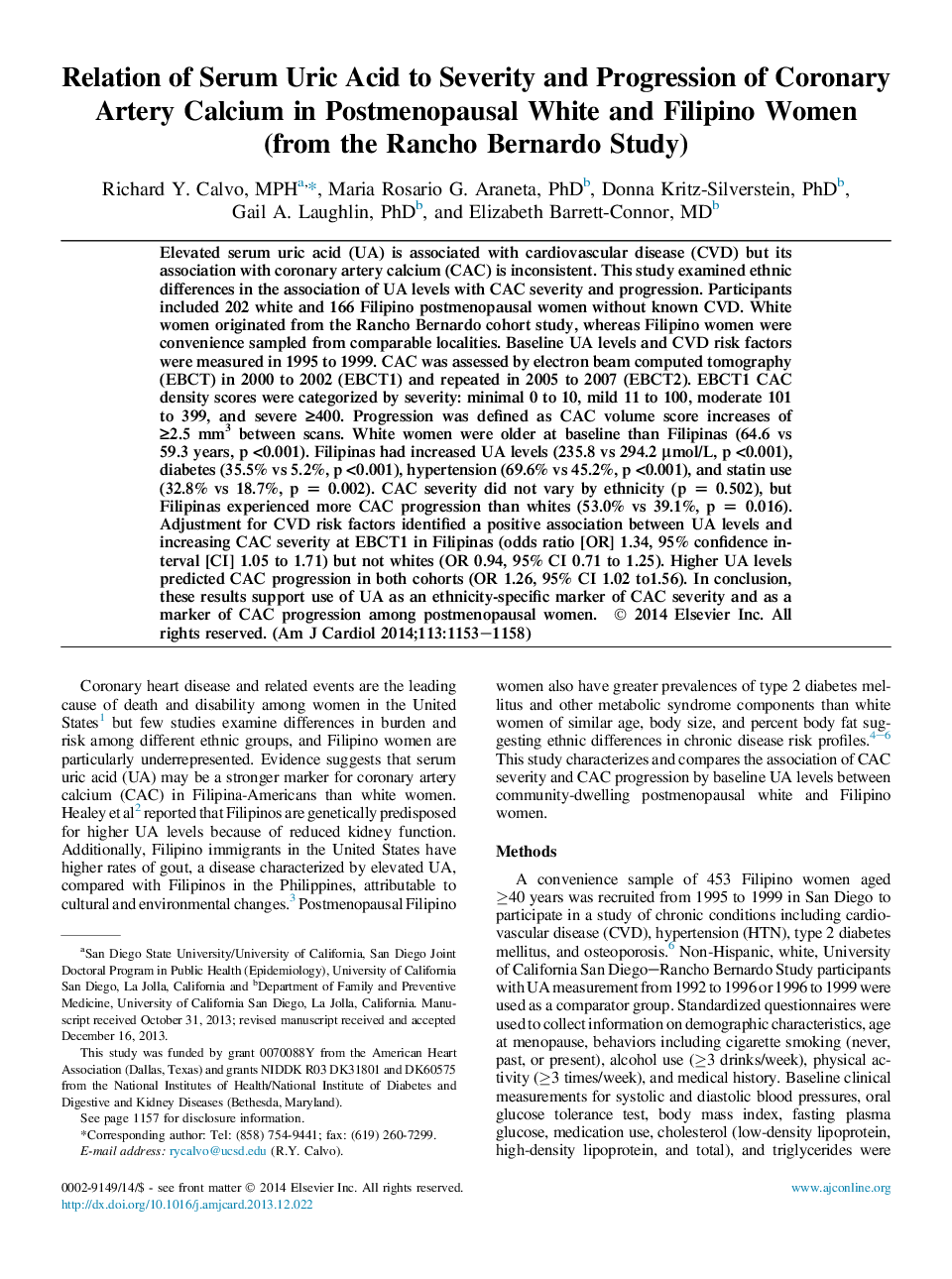| کد مقاله | کد نشریه | سال انتشار | مقاله انگلیسی | نسخه تمام متن |
|---|---|---|---|---|
| 2853949 | 1572169 | 2014 | 6 صفحه PDF | دانلود رایگان |
Elevated serum uric acid (UA) is associated with cardiovascular disease (CVD) but its association with coronary artery calcium (CAC) is inconsistent. This study examined ethnic differences in the association of UA levels with CAC severity and progression. Participants included 202 white and 166 Filipino postmenopausal women without known CVD. White women originated from the Rancho Bernardo cohort study, whereas Filipino women were convenience sampled from comparable localities. Baseline UA levels and CVD risk factors were measured in 1995 to 1999. CAC was assessed by electron beam computed tomography (EBCT) in 2000 to 2002 (EBCT1) and repeated in 2005 to 2007 (EBCT2). EBCT1 CAC density scores were categorized by severity: minimal 0 to 10, mild 11 to 100, moderate 101 to 399, and severe ≥400. Progression was defined as CAC volume score increases of ≥2.5 mm3 between scans. White women were older at baseline than Filipinas (64.6 vs 59.3 years, p <0.001). Filipinas had increased UA levels (235.8 vs 294.2 μmol/L, p <0.001), diabetes (35.5% vs 5.2%, p <0.001), hypertension (69.6% vs 45.2%, p <0.001), and statin use (32.8% vs 18.7%, p = 0.002). CAC severity did not vary by ethnicity (p = 0.502), but Filipinas experienced more CAC progression than whites (53.0% vs 39.1%, p = 0.016). Adjustment for CVD risk factors identified a positive association between UA levels and increasing CAC severity at EBCT1 in Filipinas (odds ratio [OR] 1.34, 95% confidence interval [CI] 1.05 to 1.71) but not whites (OR 0.94, 95% CI 0.71 to 1.25). Higher UA levels predicted CAC progression in both cohorts (OR 1.26, 95% CI 1.02 to1.56). In conclusion, these results support use of UA as an ethnicity-specific marker of CAC severity and as a marker of CAC progression among postmenopausal women.
Journal: The American Journal of Cardiology - Volume 113, Issue 7, 1 April 2014, Pages 1153–1158
